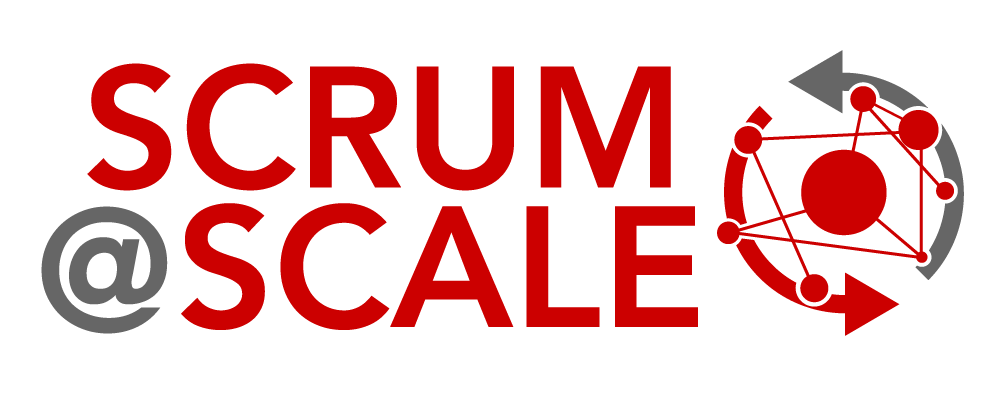Scrum@Scale Case Study
“Waterfall-ish” to Scrum@Scale
“Not everyone loves change. But, if you focus on the ones who want success, the others will follow.”
– Renee Tsielepi
CASE STUDY SNAPSHOT
Trainer Name: Renee Tsielepi
Organization: Anonymous
Organization Size:Large
Industry: Leisure and Hospitality
Topics: Executive Action Team (EAT), Reference Model, Traditional Project Management Failure
Date: 2017
Website: Renee’s website
Summary
In this case study, Renee Tsielepi, a Scrum@Scale Trainer, transformed a “waterfall-ish” travel organization of 2,000 people using Scrum@Scale, and took them from a total of 49 projects in progress initially to a single backlog with swarming. Poor coordination between the business IT components were coordinated with a single goal and vision, and the organization’s EAT improved their poor decision latency dramatically. Finally, the organization’s 80% technical debt was reduced thus opening developer bandwidth to iterate on the organization’s nearly 250 million daily searches on their API.
The Dinosaur
Renee Tsielepi was contracted to bring Scrum to a travel organization with 2,000 people that was monolithic in structure and highly waterfall-ish. There was no collaboration between IT and business components of the organization and no updates or upgrades in nearly 20 years. The organization was so hierarchical, in fact, that each layer of management was assigned a particular type of chair–higher-level management had arms and a swivel and lowest level having neither.
The organization had no concept of teams, with developers working by themselves on multiple projects simultaneously. They were about as far away from cross-functional, co-located teams as an organization could get. There was also a large amount of technical debt in the organization, with about 80 percent of time spent on debugging. Clearly, there was great urgency to update the system quickly.
Planning and Implementing a Scalable Solution
The first change Renee introduced was to deliver a scalable reference model to the organization to help locate any impediments and destroy them. She wanted to establish a network of cross-functional, co-located teams that was scalable and could collectively swarm on projects.
Once the scalable reference model was in place, the organization’s teams were scaled. She needed to simultaneously look at the size and scope of the program, locating around 49 areas of needed change. These changes, however, could not be implemented all at once–at that time, there were already around 250 million searches logged in their API daily.
Early in the transition away from the monolithic hierarchy, there were difficulties in clearly communicating the vision to invested parties. Fortunately, Renee had a trusted “wingman” that helped her look at 40 systems the organization had in place, slice these systems vertically all the way through, and create a single backlog that the entire organization could utilize. A working skeleton of the model was released early so they could get a lot of feedback.
They created 12 self-organizing teams that were associated with four Scrums of Scrums, or streams. Each team was stable and cross-functional, and T-shaped to the extent possible. Where there were not enough specialist skills, however–such as Salesforce or applicable database skills–work would have to be steered toward those teams with the relevant expertise. Over time, members of these teams would pair with developers from other teams in order to cross-train new skills.
The travel organization Renee was consulting also worked with external suppliers that were not initially scrum. In a few instances, these suppliers were able to implement scrum and work at the organization’s new cadence.
Scale and the Executive Action Team (EAT)
Among the most important changes to the previously waterfall-ish organization was the appropriate configuration of the new Executive Action Team (EAT). The EAT would assist teams in destroying previous impediments that originated with the organization’s monolithic hierarchy by owning a transformational backlog.
If, at the ground-level of knowledge workers, issues could not be resolved, these issues would be bubbled up to the Scrum of Scrums (SoS). If, in turn, the relevant SoS could not resolve the issue, it would then be bubbled up to the Scrum of Scrum of Scrums (SoSoS) and, finally, to the EAT.
Once an issue reached the EAT, impediments would be allocated to individuals on the team. This team would meet daily, with their own goals and survey of the transformational backlog. All goals from each iteration of scrum would be rolled up, including those of the EAT, and put into a single backlog that was visible to the entire organization. Upon completion of the transition, Renee was pleased to see that there were no more roles deserving of swivel arm chairs on those without–all members of the organization were now horizontally and not vertically organized.



